point out the frailties. This process forced Bruce to address the most basic elements of his fighting foundation. Cheung purposely shook this foundation. He frustrated Bruce so he would question the heart and soul of the ‘wing chun’ system.
This routine lasted until Lee and Cheung both left Hong Kong in 1959 to escape the violence of the city streets. In fact, the situation became so bad Cheung had to be smuggled out of Hong Kong en route to Australia, hoping to start a new life. Bruce returned to the city of his birth, San Francisco, taking with him $100 and just 60 percent of the modified wing chun system.
Shortly before his departure from Hong Kong, Bruce also garnered martial knowledge from another master, Sui Hong Sang. Under Sui’s brief tutelage, Bruce gained knowledge of two northern styles, including praying mantis. This need for last-minute extra knowledge was a result of two factors: Bruce desired to teach ‘gung-fu’ in America, and was aware of his limited exposure to wing chun. He sought a few more fancy movements to help fill the gaps of knowledge for the sake of his would-be students. And, for the sake of his own credibility as an instructor.
Bruce lee set sail for San Francisco in April, 1959. His stay by the Bay was not a long one, however. After several months, Bruce’s mother, Grace Lee, arranged for her 17-year-old son to stay with a family friend named Ruby Chow in Seattle, Wash. Ruby Chow owned and ran a Chinese restaurant in Seattle and was a tough, independent woman. During the time Bruce lived at Ruby Chow’s, he earned his keep by working in the kitchen. Bruce didn’t respond well to orders. The air was thick with constant friction.
Thanks to an impromptu gung-fu demonstration, Bruce attracted the attention of a handful of experienced fighters who were very interested in what he had to offer. Because they were trained martial artists, they could appreciate the wisdom and effectiveness of the young Chinaman’s approach. Eager to sever his dependence on Ruby Chow, Bruce began teaching a small group of students, training anywhere he could find a space. Classes were sometimes held in parks and sometimes in the driveway of Ruby Chow’s home. What Bruce taught this early group of students was basically the Chan Wah Shuen or ‘modified’ version of wing chun.
Consumed With Frustration.
Bruce was consumed with the frustrations he experienced while training with ‘Ah Hing.’ How could Cheung be so much better at wing chun than him, he wondered? What was Cheung doing? What did Cheung learn that Bruce had not? He knew Ah Hing was trying to tell him something. What was it? Cheung seemed to be doing the same thing he was, yet Cheung would be all over him. When he tried those same techniques on Cheung, his friend would shut him down instantly. Why? What was he doing wrong? Cheung would never say. He would only continue to exploit the weaknesses of the confused young Bruce.
Bruce’s footwork and balance had been constantly under fire. Cheung moved fluidly and effortelessly. Bruce’s movement, by comparison, seemed clumsy and awkward. Ah Hing, like a matador, would manage to somehow, at the last nanosecond, avoid his opponent’s force and expose the commitment from his opponent’s attack. Bruce, in contrast, would always manage to ‘be in the path of the bull’, overwhelmed by the immensity of the attack. And Lee was constantly being knocked off balance.
The effectiveness of Lee’s defenses were also challenged. In wing chun, the footwork sets up the body. The body, in turn, sets up the blocks and the strikes. Bruce’s foundation had been disrupted; as a result his defenses were effected because they were built on an improper foundation. He had felt slow and defenseless against Cheung’s offensives.
Bruce Lee puzzled over how to take his wing chun training further. He was now on his own to try and fit together the pieces of a mysterious puzzle (the last one-third of the wing chun system he never learned). Out of respect for Yip Man, and the wing chun clan, Bruce decided to call ‘his’ version of wing chun, Jun Fan gung-fu.
These challenges William Cheung presented to Bruce haunted the young perfectionist. Lee had to know the answer. This search continued for Bruce Lee until a challenge match in 1964 would once again shake his foundation. The confrontation was fueled by Bruce’s insistence on teaching non-Chinese, which was directly forbidden by the traditional kung-fu masters.
According to witnesses, the fight was not exactly a smooth display of martial arts mastery. After several sloppy encounters, Bruce hit his opponent in the back with a flurry of wing chun’s straight punches. The scrap then ended up on the ground, where Bruce allegedly claimed victory.
Apparently, the triumph was bittersweet for Bruce. It took about three minutes for Bruce to beat his challenger. In Bruce’s mind, it should have taken only a few seconds. He again felt the limitations of his arsenal. In addition, Bruce was completely winded after the match ‘ realizing his cardiovascular conditioning was no where near where it should be.
In his book, Bruce Lee Fighting Spirit ‘ A Biography, Bruce Thomas quotes Bruce Lee as he (Lee) recounted the fight to Dan Inosanto: ‘I chased him, and like a fool, kept punching his head and back; my fists were already swelling from his hard head. Then, I did something I’d never done before: I just put my arm around his neck and knocked him on his (butt), I kept whacking him as he lay on the floor ‘ until he gave up. I was so tired, I could hardly punch him.’
Bruce Hated to Lose
This encounter would have a profound impact on Bruce Lee. Bruce hated to lose. Because he was not able to instantly shut down his foe, Bruce perceived this fight as a defeat. He now had to work much harder to train his endurance and expand the possibilities for his attacks. He was determined, now more than ever, to eliminate these weaknesses, intensely focusing on self-improvement.
Bruce immediately began much more cardiovascular training. He ran several miles each day and incorporated an exercise bike into his regimen. Bruce also began weightlifting to improve his strength and intensified his training on the heavy bag to further improve his endurance. Moreover, his sparring sessions were now constructed to be as realistic as possible ‘ padding up, and going as close as he could to ‘all out.’ Lee became obsessed with discovering the most economical and direct attacks possible.
The quest for economical attacks led Bruce to the concept of the stop/hit. In wing chun, the practitioner neutralizes an opponent’s attack and counters simultaneously. This interception of the opponent’s movement, Bruce believed, would still be the most effective approach. But, if one’s punch, itself, could intercept an opponent’s attack ‘ by blocking with the punching hand ‘ or, literally beat the opponent to the punch, this would be the ideal. Speed would be a crucial ingredient in this formula, along with relaxation to allow for the speed. This stripped-down philosophy of interception became known as jeet kun do or way of the intercepting fist.
o one particular martial art has all the answers, Lee concluded. Wing chun had been the most effective system he’d experienced yet, but he had his frustrations with it, too. Plus, he no longer had Yip Man or William Cheung breathing down his neck to correct his weaknesses. As a result, Bruce began incorporating various elements of several different fighting systems into his tool box.
In time, Bruce exchanged information with a number of reputable martial artists. He worked with ‘Judo’ Gene Lebell, the judo and wrestling champion, whom Bruce met on the set of the ‘Green Hornet.’ Bruce knew kali and escrima from his student, Dan Inosanto. Bruce also worked out with several karate champions of that era, including Joe Lewis, Chuck Norris, and Bob Wall. As a result, Bruce’s arsenal expanded to include high and spinning kicks, grappling and additional weaponry.
To deal with the problem of his footwork, Bruce turned to ‘The Greatest’, Muhammad Ali, for help in finding a solution. Bruce was extremely impressed with Ali’s speed and mobility. As a direct rebellion against the cumbersome footwork of the Chan Wah Shuen version of wing chun, Bruce Lee decided to break free. He, too, wanted to ‘float like a butterfly” This added freedom in mobility and made Bruce much more evasive. It also increased his ability to rapidly spring forward into an attack, instantly exploiting an opponent’s opening (in addition, Bruce was also heavily influenced by the speed of Ali’s lead hand, which led to Bruce’s right hand version of Ali’s left-hand straight attack).
Wing chun (modified) was still the launching pad for jeet kun do, and several of its elements survived the transformation. The principle of economy, upon which wing chun is based (both versions), remained. The concept of the ‘centerline,’ and the importance of controlling it, were also left intact. Some of the blocks found their way as well, such as the lop sao, pak sao (palm block), gum sao (pinning block) and jut sao (jerking block). Lee also refused to part with wing chun’s straight punch, palm strikes and fingerjabs, along with various sweeps and traps.
Missing Ingredients
The practice of chi sao, or ‘sticky hands’ also was carried over. Lee recognized the value in the contact reflexes which resulted from this exercise. This training allows the practitioner to be extremely sensitive to an opponent’s force and allows the practitioner to interrupt his movement at any time. (Bruce gave direct homage to his wing chun origin in the film, Enter the Dragon, when during a tournament fight, he uses the ‘cross-arm’ version of chi sao to defeat Han’s ruthless bodyguard, O’Hara).
At this point, it is important to discuss some of the elements of the Chan Wah Shuen (CWS) version Bruce left behind in relation to some key points Bruce was never taught. The absence of these very points was responsible for Bruce’s frustrations with the ‘modified’ version of wing chun.
For example, the confining footwork (of the CWS version) from which Bruce departed does not work the same way in traditional wing chun (TWC). In TWC, the weight distribution between the feet is 50/50 (not 70/30), balancing the center directly between the feet. The width of the stance is wide, but not ‘too wide.’ The objective is to achieve the maximum stability combined with the maximum mobility possible. If the stance is too wide, this inhibits mobility, but if it’s too narrow, this will jeopardize balance.
Unlike the CWS version, where the exponent drags and shifts the feet, the TWC practitioner ‘ always ‘ lifts the feet when stepping. To do otherwise will further jeopardize the exponent’s mobility. It may also affect one’s balance, in the event one is not training on a smooth, even surface, and trips on some obstacle provided by the terrain.
The CWS version was also limited strategically because of the lack of footwork. The use of the sidestep was eliminated, which then keeps the practitioner in the path of the oncoming attack. One is often forced to deal with both arms (or legs) at the same time. In TWC, the practitioner sidesteps the path of the force, redirects or releases the force, while simultaneously moving to the outside area of the opponent’s lead arm (in TWC, called the ‘blindside’).
This positioning allows for the practitioner to only contend with one arm at a time. Furthermore, the lead elbow is pinned and rendered useless, and opponent’s ‘free’ arm cannot reach across his body without crossing his own arms. This leaves the opponent’s arms vulnerable to being trapped.
Remember, Leung Jun wanted to keep the complete wing chun system exclusively within his own family. The movements of the modified version of wing chun were intentionally created to limit and confuse Chan Wah Shuen. That was the sole purpose for its origin.
But Bruce Lee would not be limited or confined. He knew that there was something missing. Thanks to hints from his wing chun senior, William Cheung, and to Bruce’s own combat insight, Bruce broke free of these limitations. He constantly sought ‘universal’ principles in combat, which transcended, in Bruce’s mind, any one particular style of fighting.
The JKD Foundation
Bruce used the (modified) wing chun he was taught as a foundation for jeet kun do (JKD). But he rebelled against certain aspects of the system which did not agree with his keen martial arts common sense or his fierce personality. He continually added elements from other styles to satisfy his particular needs. In the end, this is what allowed Bruce to ‘honestly express himself.’
Although JKD was definitely a wing chun based system, Bruce applied it in a form that was all his own. Yet, Bruce was vehement that JKD remain a philosophy. He did not want to see it crystallize into an actual style. In theory, every person should follow his own path, expressing himself through the martial arts in a way that is as unique as each individual.
Interestingly, many of the universal principles Bruce embraced in JKD are quite similar, in principle, to those of TWC. Bruce, of course, found a different path for himself when it came to physicalizing those principles.
A few weeks before his death in 1973, Bruce Lee made a phone call to his boyhood friend and teacher, William Cheung. During the conversation Bruce expressed his desire to reunite with Ah Hing in Austrailia after finishing a project called, Game of Death. He was anxious to show Cheung the results of his new philosophy, jeet kun do, and no doubt, see how his skills would now stand up to Cheung’s wing chun expertise.
Yip Man died Dec. 2, 1972, of throat cancer. Yip’s death marked Cheung’s right of passage from master to grandmaster. And now that the system was his, he was able to do with it as he pleased. Martial arts history may have taken a very different turn had Bruce been able to visit his friend in Austrailia. Ah Hing would have finally revealed to Lee ‘Shil Lung’ the complete version of the wing chun system he’d always wanted to share with his friend, but could not until after Yip Man’s death.
It is fascinating to speculate on how Bruce may have responded to this ‘new’ information. Would he still have had the need to liberate himself? With the confines of the CWS version gone, would Bruce have found all the necessary tools needed to express himself fully within the TWC system? Would this have been enough to a man who passionately refused to be contained?
Sadly, we will never know.
Source: lawingchun.com






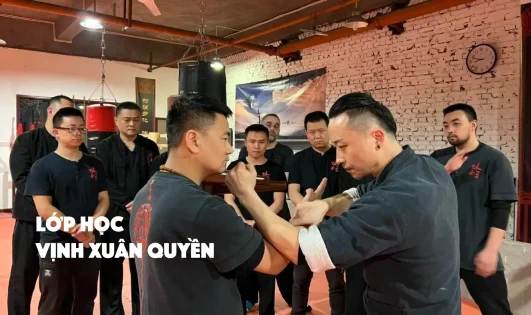


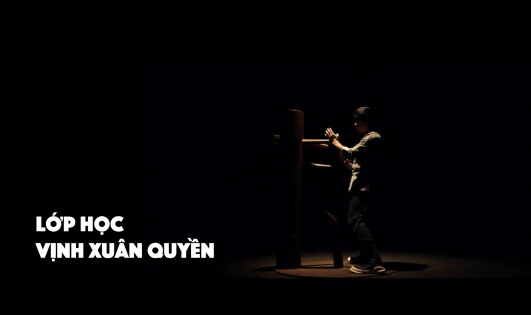
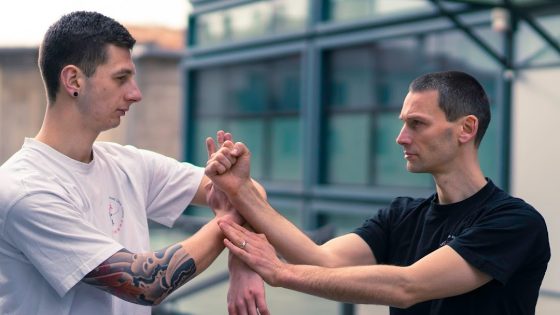


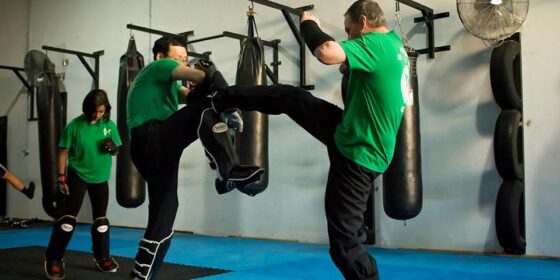






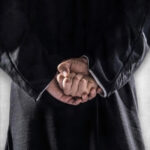
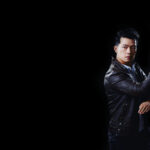
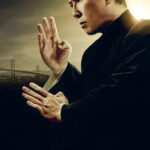
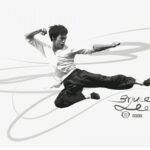






Comments are closed.